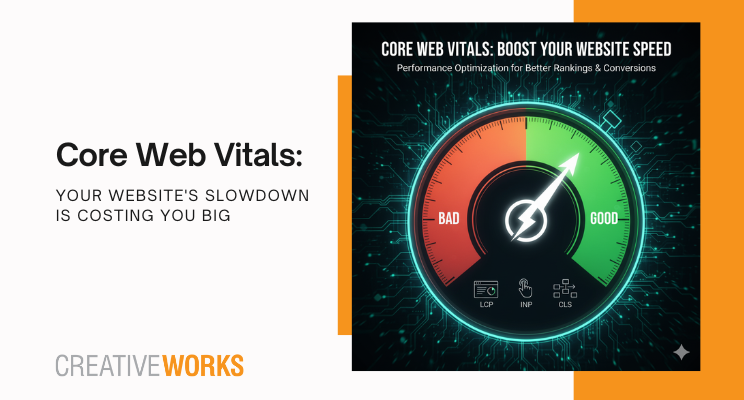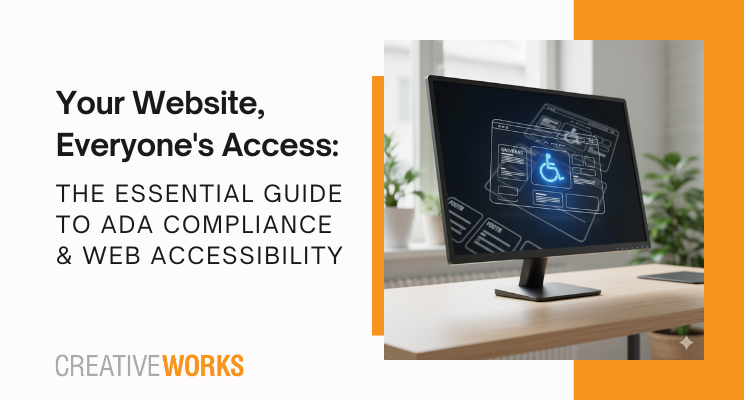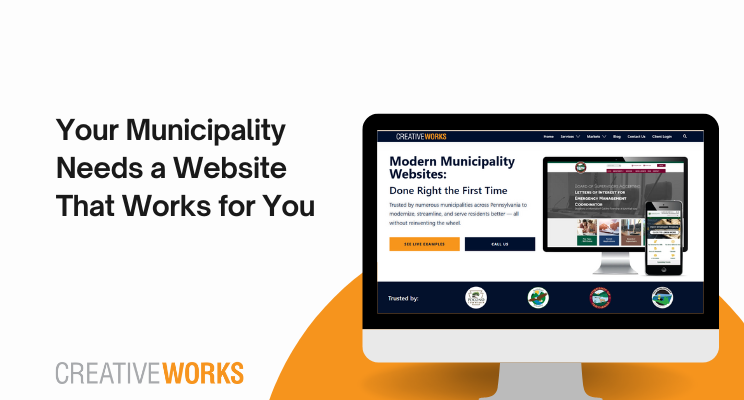Alright, let’s have a frank chat about your website. In 2025, if your site isn’t fast, smooth, and stable, it’s not just “not great.” It’s actively costing you money, customers, and those precious Google rankings.
Think about it: when was the last time you waited patiently for a slow website to load? Exactly. You hit the back button. Your customers are no different.
This isn’t just about feeling good. Google has made it crystal clear with Core Web Vitals: these aren’t just technical jargon for developers anymore; they are non-negotiable performance benchmarks that directly impact your SEO and, more importantly, your conversions.
At Creative Works, we see it every day. Businesses pour money into marketing, only to bleed users and sales because their website feels clunky. If you’re ready to stop the bleeding and turn your website into a high-performance sales machine, it’s time to get serious about these vital metrics.
Let’s break down what these metrics really mean for your bottom line.
So, What Are These Core Web Vitals Google Cares About?
Google bundles the most critical user experience metrics into this group. Think of them as your website’s report card for performance. Right now, there are three big ones you absolutely must care about.
1. LCP (Largest Contentful Paint): Your First Impression
Ever click a link and stare at a blank white screen, or a page where only the text loads, but the big, beautiful hero image you were expecting takes ages? That frustrating pause is what LCP, or Largest Contentful Paint, measures.
This metric looks at how quickly the biggest, most important content element on your page (think: that hero image, the main heading, or a big block of text) becomes visible. Google wants to see this happen in 2.5 seconds or less.
Why LCP matters to you:
- User Patience: Humans have the attention span of a goldfish (no offense, goldfish). If your LCP is slow, users will bail. They don’t wait. They assume your site is broken and go straight to your competitor.
- Bounce Rate: A slow LCP is the number one cause of high bounce rates. People arrive, see nothing, and leave. Google sees this behavior and thinks your site isn’t relevant or valuable. Ouch.
- SEO Impact: Google considers LCP a direct signal of user experience. A poor LCP score can actively pull down your search rankings, no matter how good your content or keywords are.
Think of LCP as your website’s first handshake. If it’s weak and slow, you’ve already lost trust. We focus on optimizing everything from image compression and server response times to ensuring your main content snaps into view, making a stellar first impression every time.
2. INP (Interaction to Next Paint): Your “Is This Thing On?” Metric
This is the new kid on the block, and it’s a big deal. INP, or Interaction to Next Paint, just became an official Core Web Vital in March 2024, and it’s all about responsiveness.
Have you ever clicked a button on a website—like “Add to Cart” or “Submit”—and… nothing? You’re left wondering, “Did it work? Should I click it again?” That moment of hesitation and frustration is exactly what INP measures.
It’s not just about when your page looks loaded; it’s about how quickly your site reacts when a user clicks, taps, or types. Google wants this response time to be 200 milliseconds or less.
Why INP matters to you:
- Conversion Killer: This is where sales go to die. If a user tries to open your navigation menu, use a product filter, or submit a contact form and the site feels sluggish or “stuck,” they’ll abandon the task.
- User Frustration: A high INP is just plain infuriating. It makes your website feel cheap, broken, or buggy. This isn’t just a performance issue; it’s a brand issue.
- The “Rage Click”: When a site is unresponsive, users often “rage click”—clicking the same button over and over. This tells Google in no uncertain terms that your site is providing a terrible experience.
INP often reveals hidden performance bottlenecks, like JavaScript that’s hogging the main thread or inefficient event listeners. It’s a tricky one to optimize, requiring deep technical expertise to pinpoint and resolve the underlying issues. But nailing INP means a smooth, fluid user experience that keeps people engaged and moving confidently through your sales funnel.
3. CLS (Cumulative Layout Shift): Your “Who Moved My Cheese?” Metric
This is my personal pet peeve, and it’s probably yours, too. CLS, or Cumulative Layout Shift, measures the visual stability of your page.
Ever tried to click a link or a button, and just as your mouse pointer is about to land, an ad loads above it, shifting the entire page down so you end up clicking something else entirely? Or maybe you’re reading an article, and the text keeps jumping around as images and banners pop in?
That’s CLS. It’s the measure of how much your content unexpectedly moves around on the screen after it’s started to load.
Why CLS matters to you:
- It’s Just Annoying: This is the fastest way to enrage a user. It’s disorienting and makes your site feel chaotic and unprofessional.
- Accidental Clicks: Worst-case scenario, users click on things they didn’t intend to, like “Confirm Purchase” or “Cancel Order,” leading to major frustration.
- Loss of Trust: A “jumpy” site feels untrustworthy. It’s no surprise that this is why CLS is a critical part of the Core Web Vitals; it’s a direct measure of a low-quality user experience.
The most common culprits? Images, ads, or video embeds without proper dimensions specified. The browser doesn’t know how much space to save for them, so when they finally load, they push everything else out of the way. Fixing CLS is often about proper code hygiene, but it’s one of the most important fixes you can make.
Stop Bleeding Users & Sales.
Fixing these issues isn’t just about “passing a test.” It’s about fundamental business success. A faster, more stable, and more responsive website directly translates to:
- Higher Google Rankings: Google rewards sites that provide a good user experience.
- Lower Bounce Rates: Users stay because the site works as expected.
- Higher Conversion Rates: Users can actually click “Buy Now” or “Submit Form” without friction.
- Better Brand Perception: Your site feels professional, reliable, and high-quality.
You wouldn’t let your physical storefront have a broken door, a flickering “Open” sign, and a sticky floor. So why are you letting your digital storefront get away with it?
Need an Expert Performance Audit?
Look, we get it. This is technical, complex stuff. You’re busy running your business, not digging through JavaScript files or optimizing image formats.
That’s where we come in.
At Creative Works, this is what we do. We’re experts at diagnosing exactly what’s slowing your site down and costing you sales. We don’t just run a report; we create an optimization plan to fix the root causes.
Stop guessing and stop bleeding users. Contact us today for a free assessment of your website’s performance.
Contact us today and let’s get your site back in the race!




